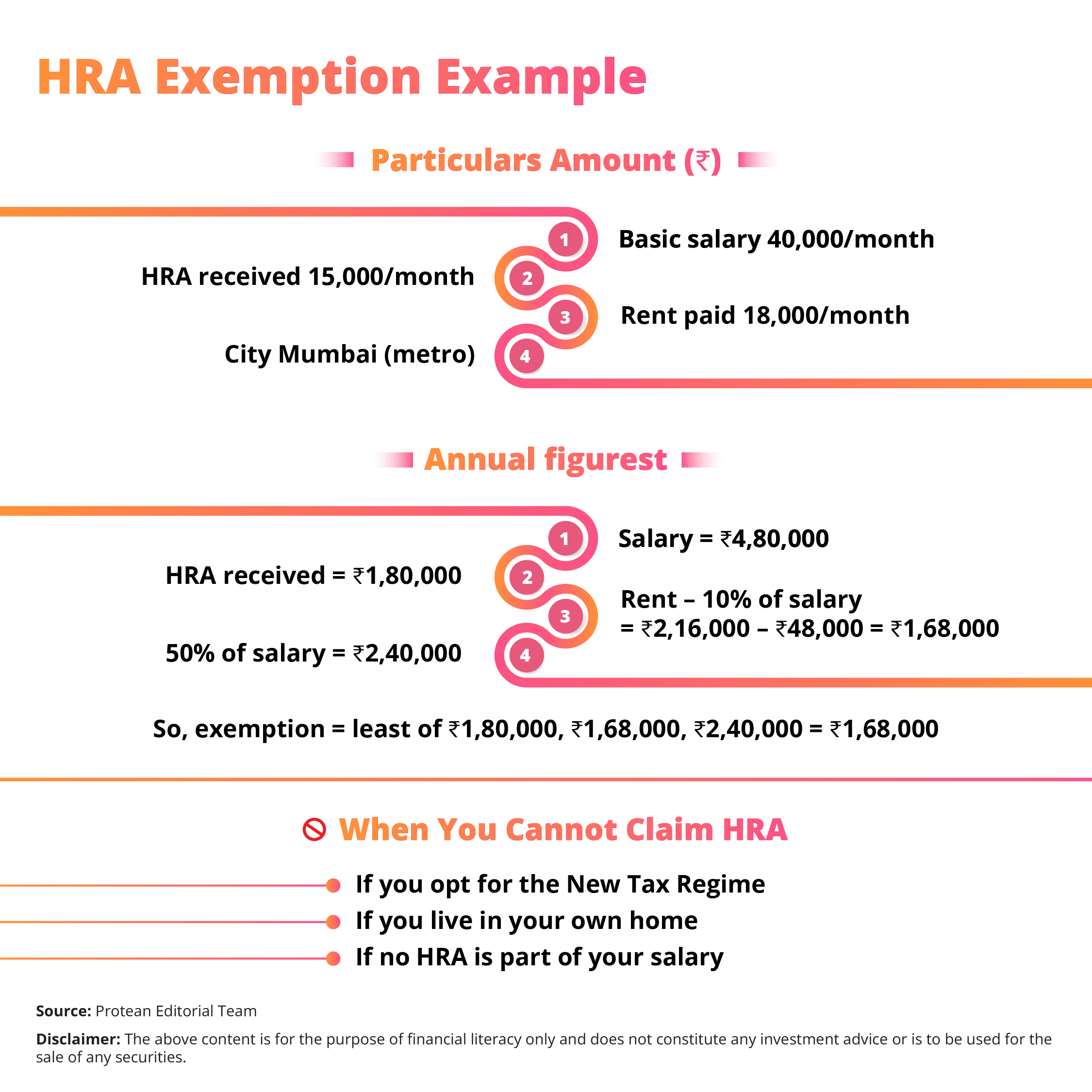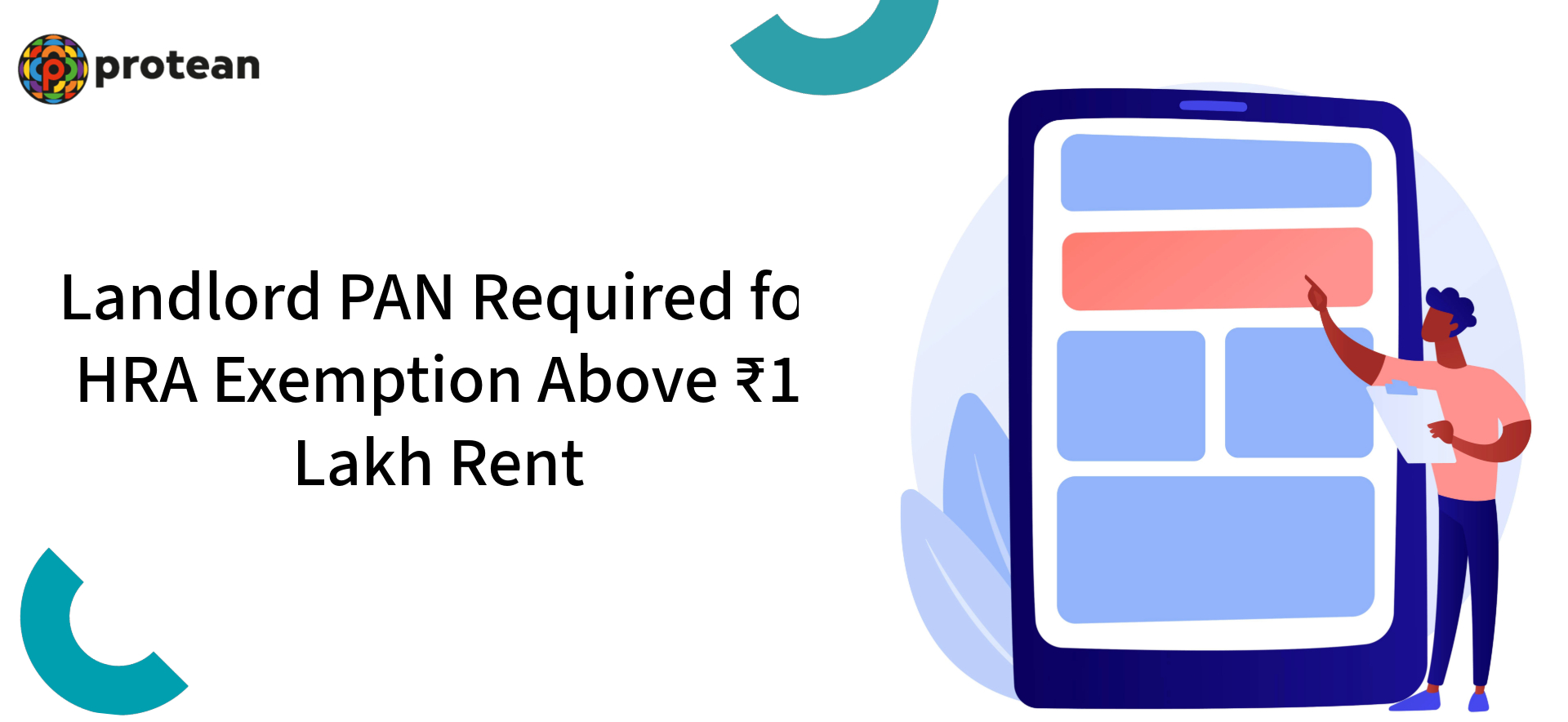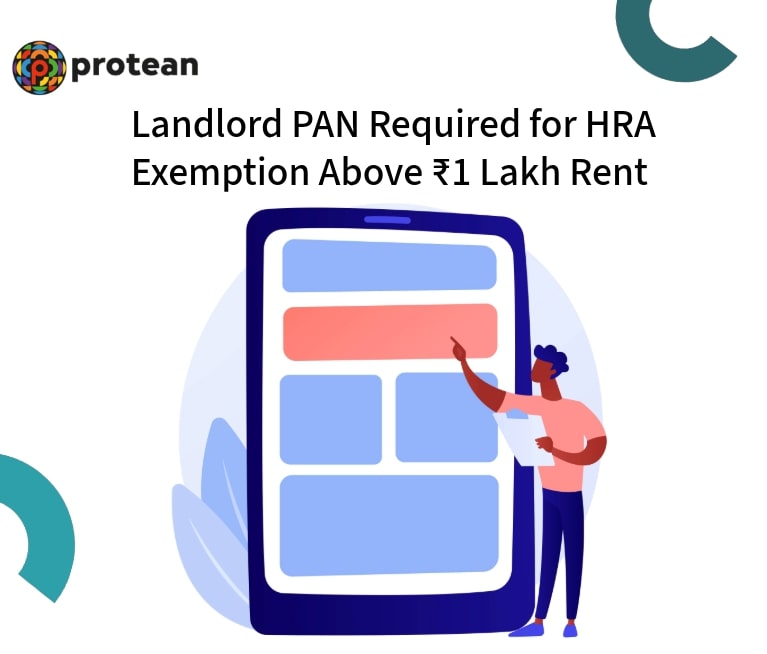What is HRA exemption? This HRA exemption is one of the tax benefits you can look for during Income Tax Return filing. Let us first learn about House Rent Allowance (HRA) and then learn about HRA exemption in tax filing.
HRA is one of the most common components in a salaried individual’s salary structure and also a widely used option for availing tax benefits. Designed to provide tax relief to those who live in rented accommodation, HRA can help reduce taxable income, thereby lowering the income tax burden. However, with increased scrutiny by the Income Tax Department (ITD), the requirement of a landlord's PAN card has become a critical aspect impacting Income Tax filing.
Let us learn more about HRA exemption in this article.
Understanding HRA Exemption Basics
HRA exemption can be claimed only by salaried individuals who receive HRA as part of their salary and live in rented accommodation. If you do not receive HRA, like if you are self-employed or your employer does not provide HRA, then you may still claim a deduction under Section 80GG of the Income Tax Act, albeit under stricter conditions and with a lower deduction cap. You claim HRA exemption under Section 10(13A) of the Income Tax Act (under the Old Tax Regime only).
- If you do NOT receive HRA (e.g., self-employed or salaried but no HRA component), then, you can claim deduction under Section 80GG, also under the Old Tax Regime.
To claim HRA exemption, documentation is essential as required by ITD. For instance, a rent agreement forms the foundational proof that you reside in rented premises and are eligible for HRA exemption in tax filing. Along with this, monthly rent receipts and preferably online transaction records like bank transfer, card payment and more, can add authenticity and support your claim during employer scrutiny or in case of any ITD queries.

When is Landlord’s PAN Mandatory
When does the landlord’s PAN card become mandatory? According to income tax rules, if your annual rent exceeds ₹1,00,000 (which translates to ₹8,333 per month), you must provide the PAN of your landlord to your employer and also disclose it in your Income Tax Return.
Why is this rule in place?
The rule serves several important purposes:
- Cross-Verification: The Income Tax Department uses the landlord’s PAN to match the rental income declared by the landlord with the HRA exemption claimed by the tenant. This mechanism improves transparency and ensures both parties report the transaction correctly.
- Curbing Fake Claims: In earlier years, some taxpayers were found fabricating rent receipts or claiming HRA for non-existent rentals. By making landlord details mandatory, particularly PAN, the department aims to deter fraudulent claims.
- Ensuring Landlord Compliance: The rule nudges landlords to declare rental income in their ITRs, improving overall tax compliance in the real estate segment.
Initially, the requirement to submit the landlord’s PAN was limited to the employer, who would use this information to compute your taxable salary and issue a compliant Form 16. While PAN submission was not mandatory in the ITR form itself, this changed in recent updates.
Update for AY 2025–26 (FY 2024–25)
With the release of the latest Income Tax Return (ITR) utilities for AY 2025–26, the Income Tax Department has tightened reporting further. In cases where the annual rent paid exceeds ₹1 lakh, disclosure of the landlord’s name, address, and PAN is now mandatory not only for employer verification but also within the ITR form itself.
In short:
- For rent up to ₹1 lakh annually: PAN is not mandatory, though documentation is still recommended.
- For rent exceeding ₹1 lakh annually: Landlord’s PAN must be furnished to your employer and entered into your ITR during income tax filing.
Failure to provide the PAN in such cases could lead to the disallowance of the HRA exemption and a resultant increase in your taxable income.
Best Practices for HRA Exemption Claims
You can plan your HRA exemption claim in advance. Thus, you can ensure that it is valid, compliant, and free from future scrutiny. Here are some best practices to follow:
- Always sign a rent agreement. It acts as proof if there’s a tax audit in income tax filing.
- Keep monthly rent receipts with the landlord’s signature and revenue stamp, as some employers may ask for them.
- Pay rent through bank transfer or cheque; avoid cash to keep a clear record.
- If your yearly rent is over ₹1 lakh, get your landlord’s PAN in advance to avoid issues in Income Tax Return filing.
- Save all documents safely, including rent agreement, receipts, PAN declaration, and payment proofs.
- If you are unsure, especially in tricky cases like renting from family, consult a tax expert.
What If the Landlord Refuses to Share Their PAN?
What if your landlord does not provide their PAN despite rent exceeding ₹1 lakh annually? For instance, an individual has paid ₹1.8 lakh annual rent but his landlord has refused to share his PAN. To support his HRA exemption claim, he can obtain a signed declaration from the landlord stating the reason, along with rent receipts and agreement. However, if the landlord has a PAN but refuses to share it, a declaration is not a valid substitute for the PAN as per the rules. In such a case, the tenant may not be able to claim HRA exemption through the employer.
Conclusion
HRA exemption is a powerful tax-saving tool for salaried individuals in India. But with growing focus on compliance and accurate reporting, submitting your landlord’s PAN card has become essential, if your annual rent exceeds ₹1 lakh. Both your employer and the ITD require this detail to validate your HRA exemption claim.
To ensure you do not lose out on this legitimate tax benefit, you can maintain clear documentation, follow best practices, and stay updated with the latest tax provisions. It can also ensure your income tax filing is smooth, your claims are valid, and your eligible exemptions are efficiently utilised. Click here to learn more about PAN used for IT deductions.

